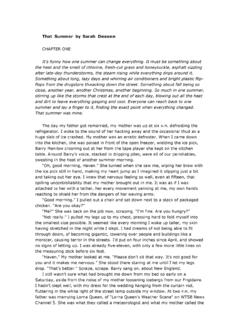Transcription of The Medieval Tailor’s Assistant: Updates and Revisions ...
1 The Medieval Tailor s assistant : Updates and Revisions Here are some tweaks to the basic methods, or updated observations, resulting from my own work and responses from readers. Page 25 How to proceed, para 2; Women should not wear a There are a lot of very well-endowed young women around these days, and if you need a sports bra under your smock to feel comfortable then wear one: we have to dress the bodies we ve got. But please make sure the straps don t show. Page 27 Men s Blocks Fig 8, Waist darts: Two darts will Experience shows that plenty of male figures don t actually form darts at the front waist: follow the individual figure.
2 If the front has no waist seam, and the back has, that s not a problem. If the back doesn t form a dart either, that s not unknown. Sleeve Blocks Some improvements to the basic sleeve draft for different figures and sizes. Page 35, The Seam Line: When planning the seam lines for wearers such as longbowmen -- with muscular forearms, use the extra arm measurements listed in , to ensure that the lower sleeve is wide enough. You may need to put an angle in one or both seam lines at the elbow, so the width increases from wrist to elbow, rather than from wrist to underarm. Page 37, : Sleeve for Larger Armhole Rather than Limit the length of the upper curve to 30 cms a simpler method is to use 12cms as a maximum length along Shoulder Line from SP-Front Line (and therefore 15cms for SP-Back line).
3 Use the actual Sleevehead size to calculate the vertical measurements to FP, UP and BP. This may give quite a deep underarm and a longer back extension, but the fit should benefit from these. Page 38, Cutting the Sleeve I recommend cutting all doublet sleeves, and other close-fitting styles, with the back seam on the Straight Grain: this improves the set by putting more of the sleevehead on the bias. Page 39, : Small child s Block This gives no special instructions for small sizes of sleeve, referring the reader back to the adult sleeve on Page 34. Where the instruction states To the left of SP mark a fifth of the sleeve head measurement plus 3cm the sleeve will be a better shape if you add: 2cm for small children below 116cm in height for children 116-150cm in height or for any sleeve head less than 45cm.
4 Various Garment Details COTES Page 79,80, captions 4 and 6, final sentence: Join the straight edges of the side gores to the body should of course be join the Bias edges . DOUBLETS Page 102, Making up the puff sleeve. It s both easier and more effective to sew the puff over the armhole seam, rather than setting it into the seam with the sleeve. Make up the sleeve with the puff as shown in Figure 9, but before attaching the padding set the straight sleeve (all layers as used) into the armhole, leaving the top edge of the puff loose. Make the padding as described, then stitch the puff to the body just over the seam, turning the edge under and pleating it to fit.
5 WOMAN S FLARED GOWN Pages 158-160 I have found that the V neck of this gown tends to gape, especially on women with larger busts. To avoid the problem, plan a slash line on the front bodice pattern ( ) from shoulder to waist (see the man s pleated gown, figs. 19 and 20, for the method) and open the slash 5-8cms at the waist before planning the skirts. This will add a little width to the front bodice where it is needed. WOMEN S HEADDRESSES I d love to re-write this entire chapter in the light of further work. Most of the changes are small details, but if details are important then do contact me to discuss the various types.
6 The composite hood affair on pages 203 is a misunderstanding of the very common combination of Bonnet and frontlet . The bonnet is a flowerpot-type cap and the frontlet is a strip of luxury fabric, very often velvet, about 22cms wide and 68 cms long and made double. The frontlet is folded lengthways and pinned in place over the bonnet, with its ends falling to the shoulders. A triumph for the use of written records to clarify visual information! Bibliography Some invaluable titles to add: E. Benns & G Barrett Tak V Bowes Departed: A fifteenth-century braiding manual examined available from M Scott Medieval Dress and Fashion British Library 2007 Woven Into the Earth Aarhus Press 2004







